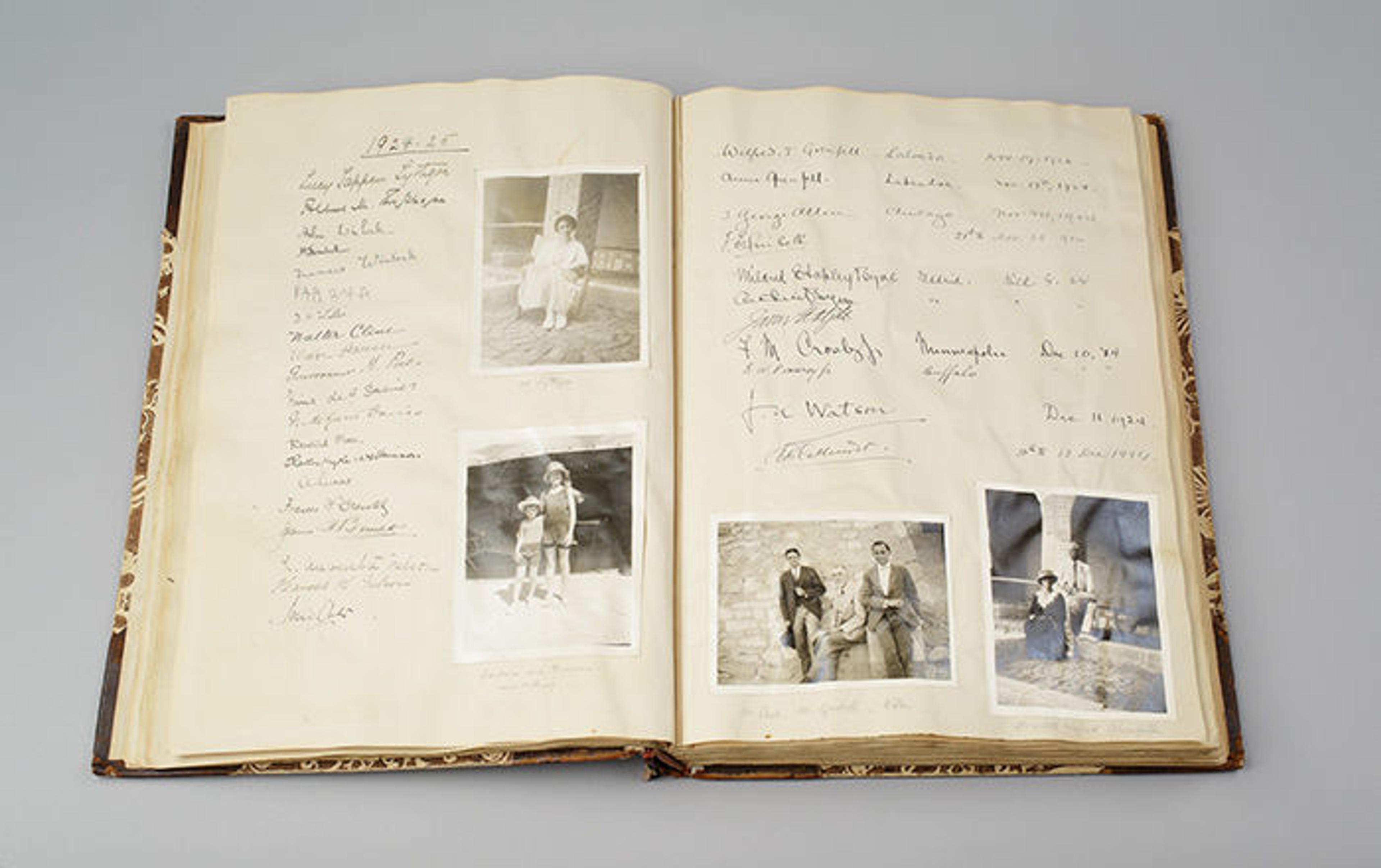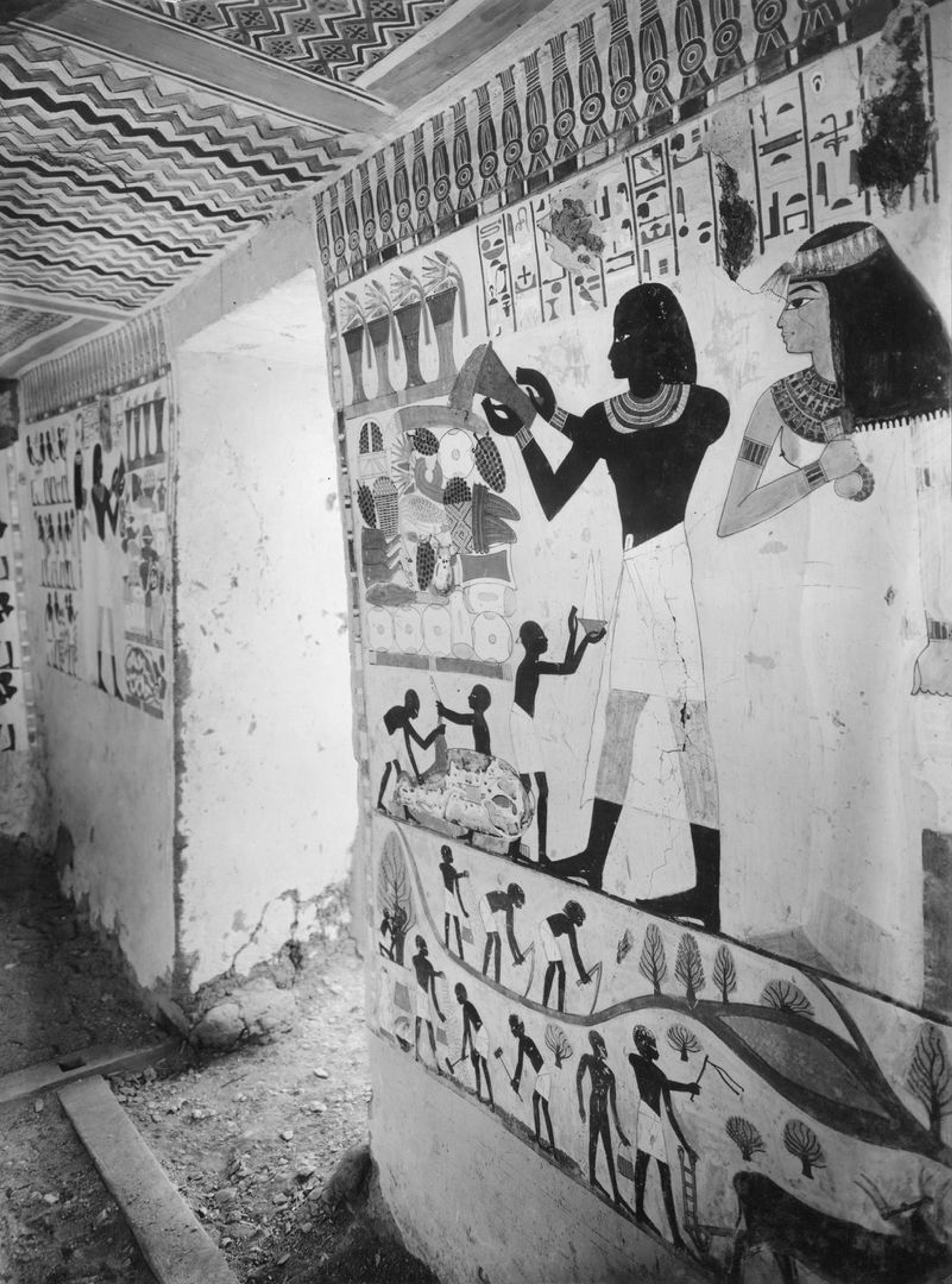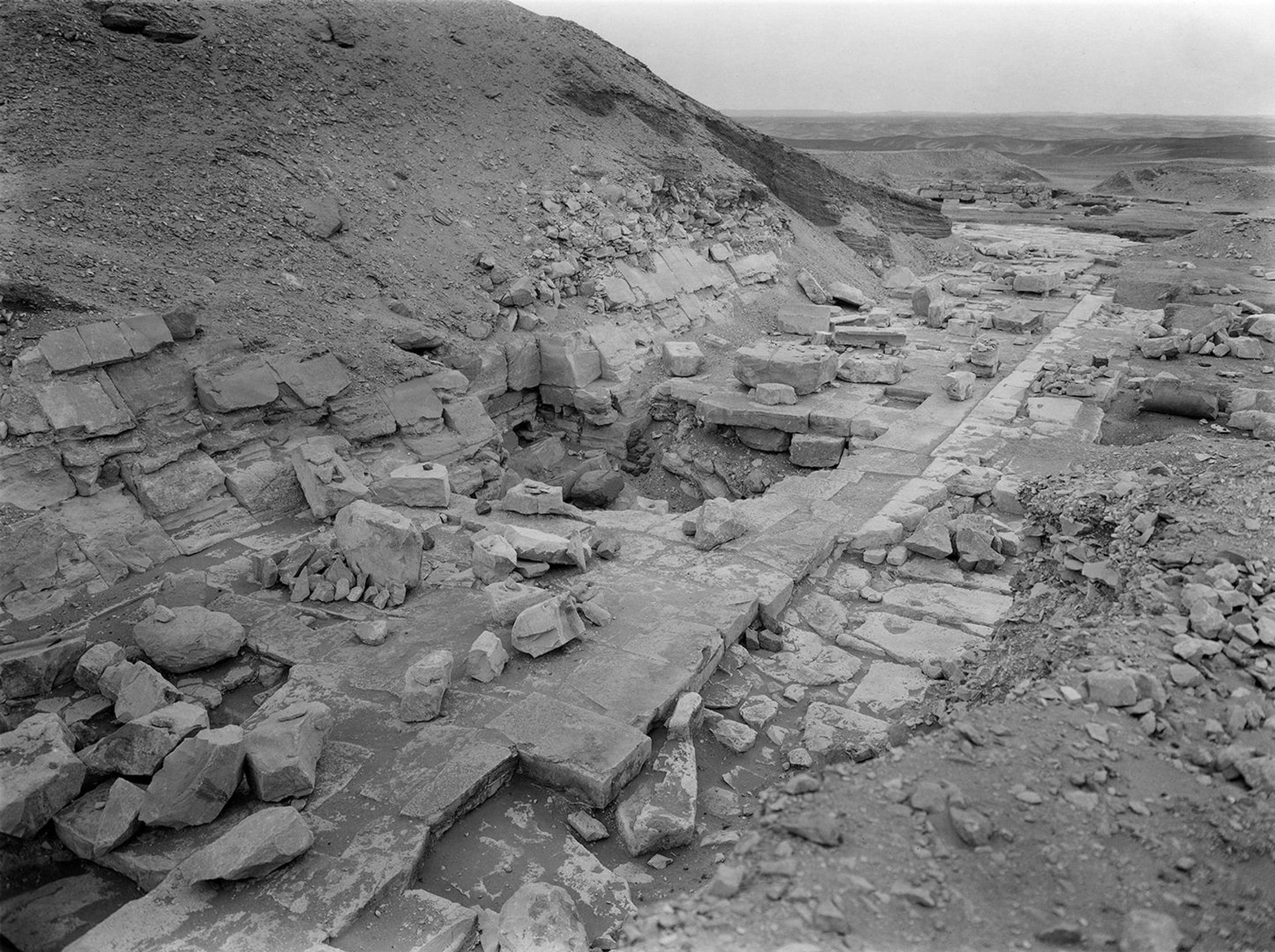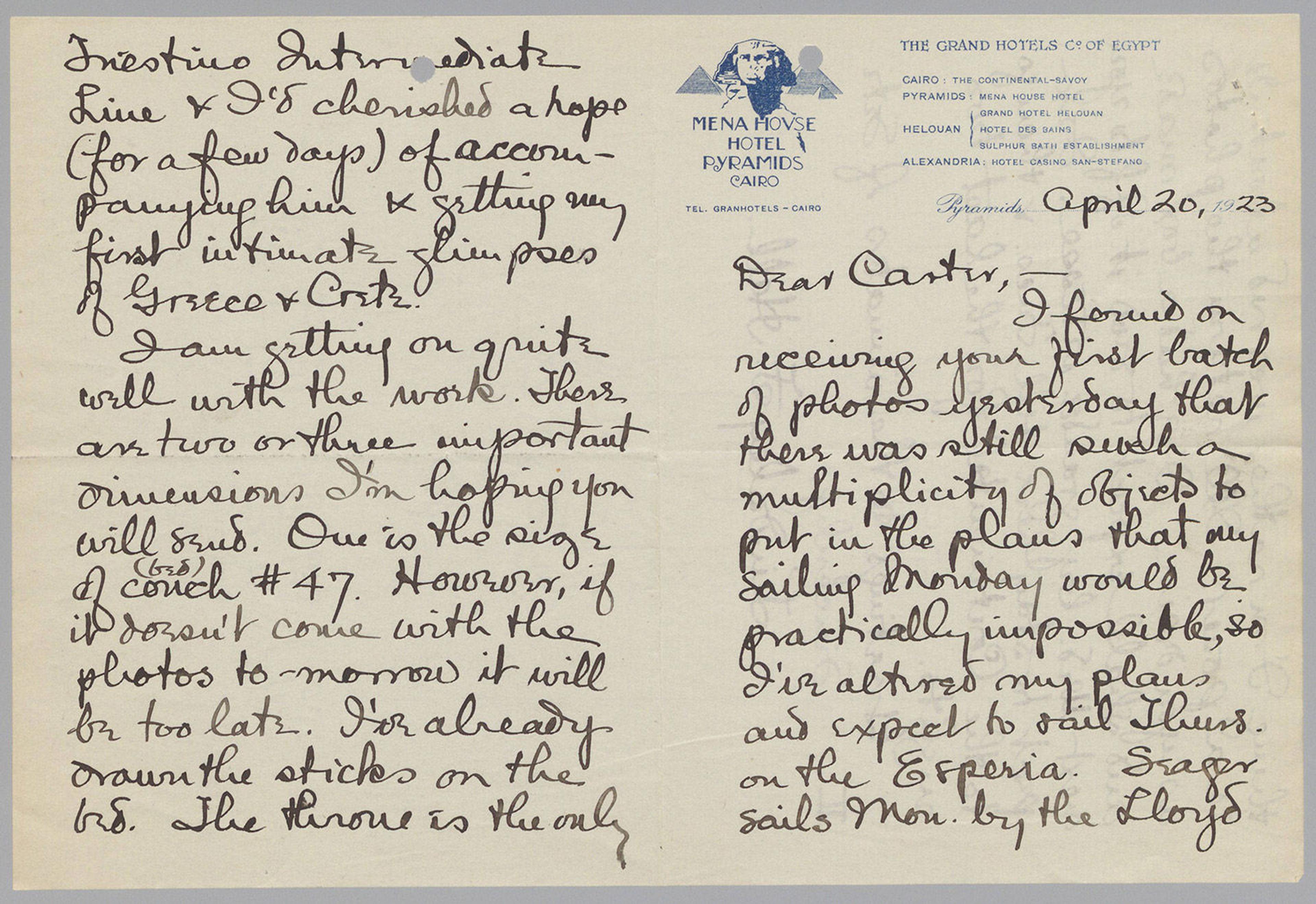
A spread from the guest book kept between 1923 and 1939 by Minnie Burton, wife of photographer Harry Burton, at Metropolitan House on the West Bank at Thebes. The Metropolitan Museum of Art, Gift of Mr. Charles K. Wilkinson, 1976 (1976.200)
The Department of Egyptian Art oversees a wide range of archives, with the earliest dating back to the late nineteenth century. This documentation is being digitized as it is studied, and that material will be made available online through various projects and digital publications. Additionally, archival material, as long as it is not already part of an ongoing project and there is available staff, can be shared for study upon request.
These archives include extensive records from our early twentieth-century Egyptian Expedition, which excavated at important sites throughout Egypt between 1906 and 1936. These included Lisht, known for the Middle Kingdom pyramids of Amenemhat I and his son Senwosret I (about 1980–1915 B.C.); the Kharga Oasis in the Western Desert and the Wadi Natrun in the Delta, both primarily dating to the early Christian era (and now housed with the Department of Medieval Art); the Theban necropolis in southern Egypt, where our team excavated monuments dating from the early Middle Kingdom (about 2000 B.C.) through to the Byzantine Period (A.D. 330–641/42); and Hierakonpolis, about sixty miles south of Thebes, where work focused primarily on a Predynastic cemetery (about 3600–3100 B.C.). These records comprise large maps and plans, field notes, and captioned photographs.

Field notes ("tomb cards") and an archival plan (redrawn by Sara Chen) from the excavations of the tomb of Ankhshepenwepet (MMA 56) on the west bank at Thebes. The Metropolitan Museum of Art, Department of Egyptian Art Archives (TCThebes 208; AM 1216)
In addition to the excavations, the Egyptian Expedition fielded a Graphic Section, which was established in 1907 to document ancient monuments at Thebes and at other sites. Over the next three decades, this team painted more than 350 facsimile copies of ancient wall paintings and took many photographs recording tomb decoration. Captioned prints of these photographs are also stored in the department. Tutankhamun was discovered in 1922, and Met photographer Harry Burton was loaned to Howard Carter to assist with the documentation of this spectacular find. Burton took similar or duplicate negatives for most of his photographs, so the department owns a set of Tutankhamun negatives and prints, while the primary archive of Carter's excavations records is in the Griffith Institute in Oxford.

The entrance wall into the transverse chamber of the chapel in the Tomb of Nakht (TT 52) on the West Bank at Thebes. Photograph by Harry Burton, 1914–15. The Metropolitan Museum of Art, Department of Egyptian Art Archives (T 504)
After a hiatus between 1936 and 1984, the department went into the field again, working first at the site of Lisht. From 1984 until 1991, the mission to Lisht was headed by curator Dieter Arnold (now curator emeritus); the team continued work on the two Middle Kingdom pyramid complexes there. In 1990, Arnold moved The Met's Egyptian Expedition to Dahshur, where he was joined by curator Adela Oppenheim, currently the Expedition’s director. Their work, which is ongoing, focuses on the pyramid complex of the later Middle Kingdom ruler Senwosret III (reigned from around 1878–1840 B.C).

The north side of the pyramid of Senwosret I at Lisht South with the entrance to the king’s burial chamber. Photograph by Harry Burton, 1933–34. The Metropolitan Museum of Art, Department of Egyptian Art Archives (L33-34 587)
In 2008, Diana Craig Patch, Lila Acheson Wallace Curator in Charge of Egyptian Art, launched new excavations at Malqata, the festival city of the New Kingdom pharaoh Amenhotep III (reigned beginning around 1350 B.C.) on the West Bank at Thebes. This had been explored previously by the Egyptian Expedition from 1910 to 1920. The Joint Expedition to Malqata was originally co-sponsored by the Michael C. Carlos Museum and then the Ancient Egypt Archaeology and Heritage Fund under Peter Lacovara, but is now a Met Egyptian Expedition excavation. The documentation from the recent and current expeditions to Lisht, Dahshur, and Malqata is also housed as part of the department’s archives.

Letter from Lindsley F. Hall in Cairo to Howard Carter, April 20, 1923. The Metropolitan Museum of Art, Department of Egyptian Art Archives
Another significant collection of archival material is correspondence and research material from previous members of the department, such as Albert Lythgoe, who was the Department of Egyptian Art’s first curator; Herbert Winlock, who succeeded Lythgoe and later became director of the Museum; as well as curators and archaeologists such as Ambrose Lansing and Arthur Cruttenden Mace, the latter of whom became an important member of the Tutankhamun team; and more recent curators-in-charge Henry Fischer, Christine Lilyquist, and Dorothea Arnold. The papers of Arthur Weigall and Howard Carter are now fully digitized and in the process of being made available through the Thomas J. Watson Library Digital Collections on The Met website.